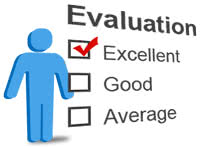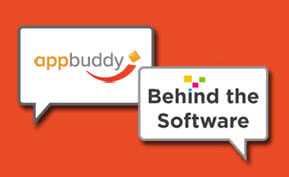Business Intelligence
Human Resources
Data at the Helm: How Analytics Impact Employee Valuation

Data is everywhere. Big or small, external or internal, every company seems to be feverishly hunting for the next piece of cold, hard data that will finally give them the answer that will point their company in the right direction. Just take a look at the Google Trends graph for the term ‘analytics’ which went from a virtual flatline in 2005 to nearly spiking off the charts in 2013. It might have begun in the sales world, but the desire for more metrics has come to dominate conversations about efficiency in all departments, and human resources is no exception.
If all employees are subject to the same rubrics, then what do quantifiable methods of evaluation mean for a department that has traditionally depended on intangibles to measure success? While data tracking provides otherwise inscrutable insight into how businesses can improve efficiency, the impact of using data as the guiding compass for human resources has so far produced mixed results.
Case in Point
A prime example of how reliance on data has changed the face of the American economy is the now ubiquitous practice of outsourcing. Simply put, when data shows that the same jobs can be performed at a lower cost elsewhere, executives consider the decision a no-brainer. The danger in this assumption is that something measurable (i.e. cost) is being traded for something immeasurable (i.e. quality of labor) until the company can make a one-to-one comparison of its in-house and outsourced workforces. By the time outsourced labor has generated enough data to be comparable, months of potential damage have already been done. As New York Times columnist Phyllis Korkki noted during her conversation with HR blogger Suzanne Lucas,
“Problems arise if outside vendors are concerned mainly with maximizing their income and lowering their costs, resulting in ‘low flexibility and poor service,’ Ms. Lucas said. It’s in the best interest of employees at this kind of vendor ‘to provide as little service as possible,’ she said. And at such a vendor’s call center, she said, ‘I don’t even have to care about morale at your site, because it doesn’t affect my day.’”
Filling the Gap
The poor quality of outsourced labor isn’t the problem facing human resources managers, however. Rather, it’s symptomatic of a larger shift away from investment in human resources, at least according to Peter Capelli, Director of the Center for Human Resources at the Wharton School of the University of Pennsylvania. Capelli tells Korkki that,
“…many internal H.R. functions have been ‘cut to the bone’…Therefore the idea that companies will be more strategic about human resources after they outsource ‘requires some heroic assumptions.’”
Capelli isn’t the only one to recognize that there is an unfulfilled need in the market. Like so many other industries that recognize a weak point, onsite human resources management is now experiencing a deluge of software attempting to fill the gap. A quick search produces dozens of comparable HR management packages from Aquire, SumTotal, Tableau, Oracle, and many more as you can see from our Product Finder search for workforce management solutions.
This diversity of solutions begs the question: if the workforce is now split between in-house employees, outsourced labor, and software, how do we collect the data to find out what’s working? SAP’s Ray Rivera argues that how your HR stacks up depends on which view of success your executives are using. Rivera outlines three models for evaluation: the resource-based view, the behavioral view, and the configurational view. In essence, Rivera argues that measuring success by the number of talented employees you have, the actions your employees take, or the system that allows your employees to take the right actions will likely produce three completely different results.
Best of Both Worlds
While it’s tempting to lean on software features like pipeline auditing, movement analysis, and talent forecasting to make the rest of your HR decisions ad infinitum, jumping on the Moneyball bandwagon isn’t always what it’s chalked up to be. If the never-ending hype of heavy reliance on data has proven anything, it’s that the more a company relies on data the worse they become at discerning immeasurable value in their employees. Just take a look at Swizec Teller’s recent recap of his interview at Google, one of the companies most exalted for its HR practices: “Whenever you don’t know something, they just wave you on and say it’s not really important. And you can tell it doesn’t matter.” This is not to say that Google doesn’t use data, they do, but as Rivera says, “if people are truly your most valuable investments, then they belong at the core of your strategy, and deserve the best analytics you’ve got.”
Want more information on the best business intelligence solutions?
We’ve collected the top reviews, blog posts and premium content on on our BI software research page. Also, be sure to compare the leading BI products on our Top 10 Business Intelligence Software report, where we give you all the details on pricing, features and delivery models.






